Evolutionary Ecology
The department of Evolutionary Ecology gathers complementary skills in behavioural ecology, population dynamics, population biology, community ecology, and methodology (statistics and modelling). The research done in the department aims at studying how animal species evolve in a changing world by understanding the causes of the evolution of traits, adaptations and interactions. For that, we consider different levels of organization from individuals to populations and communities. Because organisms cannot be considered isolated from other biotic factors, we consider pathogens but also competing species within communities.
We study how individuals adapt to their environments that are largely impacted by anthropic pressures, and how life history traits and behaviour evolve in response to these pressures. Although we mainly focus on phenotype, we more and more consider the mechanistic link between the genotype and the phenotype. We develop the theoretical framework of our discipline through a conceptual and modeling approach. In parallel, we test hypotheses that arise from theoretical predictions through experimental, comparative and observational approaches on different biological models (insects, birds, mammals). Experimental approaches are developed in the laboratory (insect model) and in natura (bird, insect and mammal models). Observational and comparative research is mainly concerned with vertebrates. Our approaches are also, and increasingly, interested in the mechanisms of adaptive responses. In addition to the classical approaches of demographic analysis and trait change, methods of ecophysiology, chemical ecology and molecular biology are used.
Our department hosts several long-term studies of wild populations of different species. These long-term studies offer a valuable way to understand how biotic and abiotic factors affect individuals’ life history traits, and the functioning of populations in natura. Five populations of mammalian species are thus monitored for several years (more than 40 years on roe deer, 30 on Alpine marmots, 25 years on cats, 16 years on zebras, and 20 years on impala). Two of our study sites (La Sassière in Vanoise National Park (Alpine marmots) and Hwange National Park) have been certified as “Site d’Etude en Ecologie Globale” (SEEG), and two (ZA “Hwange” and ZA “Antarctic and sub-Antarctic”) were certified as “Zone Atelier” by the CNRS.
The department of Evolutionary ecology is also largely involved in training activities. Lastly, we also have strong socio-economic relationships. Indeed, because we address questions of major societal interest (global warming, public health) we tightly collaborate with socio-economic partners (Office Français de la Biodiversité, Vanoise National Park, Hwange National Park in Zimbabwe, Office National des Forêts, etc.) and participate to general public and media events.
Publications
Display of 781 to 810 publications on 2449 in total
Testing the Mantel statistic with a spatially‐constrained permutation procedure
Methods in Ecology and Evolution . 10 ( 4 ) : 532-540
Journal article
see the publicationAvis de l’Anses relatif à la mise à jour des connaissances sur les méthodes et procédés d’inactivation du virus de la peste porcine africaine (PPA)
: 39 p.
Report
see the publicationPollen limitation as a main driver of fruiting dynamics in oak populations
Ecology Letters . 22 ( 1 ) : 98-107
DOI: 10.1111/ele.13171
Journal article
see the publicationImportance de la variabilité intraspécifique de la polluosensibilité pour l’évaluation du risque ecotoxicologique basée sur l’approche SSD (Species Sensitivity Distribution)
38ème colloque de l’Association des Diatomistes de Langue Française (ADLaF) .
Conference paper
see the publicationEvidence for risk-taking behavioural types and potential effects on resource acquisition in a parasitoid wasp
Animal Behaviour . 154 : 17-28
Journal article
see the publicationAn aging phenotype in the wild
Science . 365 ( 6459 ) : 1244-1245
Journal article
see the publicationVariation in actuarial senescence does not reflect life span variation across mammals
PLoS Biology . 17 ( 9 ) : e3000432
Journal article
see the publicationSenescence in the Wild: Theory and Physiology
Reference Module in Biomedical Sciences .
Book chapter
see the publicationThe diversity of population responses to environmental change
Ecology Letters . 22 ( 342-353 )
DOI: 10.1111/ele.13195
Journal article
see the publicationBoth candidate gene and neutral genetic diversity correlate with parasite resistance in female Mediterranean mouflon
BMC Ecology . 19 : 1-14
Journal article
see the publication(In)exhaustible Suppliers for Evolution? Epistatic Selection Tunes the Adaptive Potential of Nongenetic Inheritance
The American Naturalist . 194 ( 4 ) : 470-481
DOI: 10.1086/704772
Journal article
see the publicationAbsence of paramyxovirus RNA in non-human primate sanctuaries and a primatology center in Gabon
Journal of Epidemiological Research . 5 ( 2 ) : 6
DOI: 10.5430/jer.v5n2p6
Journal article
see the publicationEvolution of Hepatitis B Virus Receptor NTCP Reveals Differential Pathogenicities and Species Specificities of Hepadnaviruses in Primates, Rodents, and Bats
Journal of Virology . 93 ( 5 )
DOI: 10.1128/JVI.01738-18
Journal article
see the publicationAltitude shapes the environmental drivers of large‐scale variation in abundance of a widespread mammal species
Ecology and Evolution . 10 ( 1 ) : 119-130
DOI: 10.1002/ece3.5851
Journal article
see the publicationA sharp incisor tool for predator house mice back to the wild
Journal of Zoological Systematics and Evolutionary Research . 57 : 989–999
DOI: 10.1111/jzs.12292
Journal article
see the publicationFirst levantine fossil murines shed new light on the earliest intercontinental dispersal of mice
Scientific Reports . 9 ( 1 )
Journal article
see the publicationNo evidence for behavioural syndrome and genetic basis for three personality traits in a wild bird population
Animal Behaviour . 153 : 69-82
Journal article
see the publicationNine Quick Tips for Analyzing Network Data
PLoS Computational Biology . 15 ( 12 ) : e1007434
Journal article
see the publicationDiversity indices for ecological networks: a unifying framework using Hill numbers
Ecology Letters . 22 ( 4 ) : 737-747
DOI: 10.1111/ele.13221
Journal article
see the publicationSpatial analyses of multi-trophic terrestrial vertebrate assemblages in Europe
Global Ecology and Biogeography . 28 ( 11 ) : 1636-1648
DOI: 10.1111/geb.12981
Journal article
see the publicationLiving on the edge: Was demographic weakness the cause of Neanderthal demise?
PLoS ONE . 14 ( 5 ) : e0216742
Journal article
see the publicationQuantifying the contribution of immigration to population dynamics: a review of methods, evidences and perspectives in birds and mammals
Biological Reviews . 94 ( 6 ) : 2049-2067
DOI: 10.1111/brv.12549
Journal article
see the publicationHabitat fragmentation and anthropogenic factors affect wildcat Felis silvestris silvestris occupancy and detectability on Mt Etna
Wildlife Biology . 2019 ( 1 ) : 00561
DOI: 10.2981/wlb.00561
Journal article
see the publicationPhenotypic plasticity, global change, and the speed of adaptive evolution
Current Opinion in Insect Science . 35 : 34-40
Journal article
see the publicationModified home range kernel density estimators that take environmental interactions into account
Movement Ecology . 7 : 16
Journal article
see the publicationPost-copulatory sexual selection allows females to alleviate the fitness costs incurred when mating with senescing males.
Proceedings of the Royal Society B: Biological Sciences . 286 ( 1913 ) : 20191675
Journal article
see the publicationElevated basal corticosterone levels increase disappearance risk of light but not heavy individuals in a long-term monitored rodent population
Hormones and Behavior . 113 : 95-102
Journal article
see the publicationAssessing ageing patterns for comparative analyses of mortality curves: Going beyond the use of maximum longevity
Functional Ecology . 34 ( 1 ) : 65-75
Journal article
see the publicationPredicting the effects of climate change on bird population dynamics
Effects of climate change on birds . : 74 - 90
Book chapter
see the publicationOld females rarely mate with old males in roe deer, Capreolus capreolus
Biological Journal of the Linnean Society . 128 ( 3 ) : 515-525
Journal article
see the publication
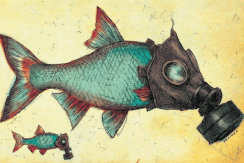
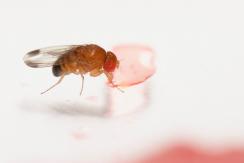
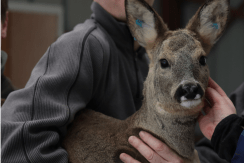
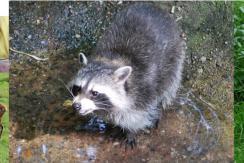
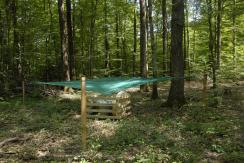
You also, comment on this article